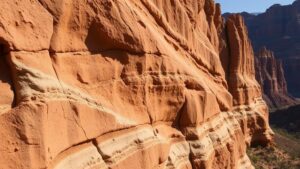How Placer Deposits Along Bear Creek in the Burro Mountains Were Mined
How Placer Deposits Along Bear Creek in the Burro Mountains Were Mined
The Burro Mountains, located in southwestern New Mexico, are home to a rich history of mineral exploration and extraction. Among its geological treasures, placer deposits found along Bear Creek have played a crucial role in the mining landscape. This article explores the methods and processes involved in mining these placer deposits, as well as the historical and economic significance of this activity.
Understanding Placer Deposits
Placer deposits are concentrations of valuable minerals formed by the mechanical weathering of pre-existing rocks. Gold, silver, and gemstones are commonly retrieved through this mining type. These deposits accumulate in riverbeds, beaches, or slope sediments through natural processes like erosion and sedimentation.
The Geology of Bear Creek
Bear Creek is situated in a region characterized by diverse geology, predominantly consisting of volcanic and sedimentary rock formations. Placer deposits in this area are primarily composed of gold, which is eroded from nearby lodes within the surrounding mountain ranges. streambed and terrace deposits along the creek play a vital role in concentrating these minerals through hydraulic sorting.
Historical Overview of Mining Activities
Mining activities in the Burro Mountains began in the late 19th century, driven by the gold rush fever that swept across the western United States. Early miners utilized rudimentary tools, such as pans and simple sluices, to extract gold from the placers. These techniques laid the foundation for larger scale mining operations that followed.
Methods of Mining Placer Deposits
Mining placer deposits along Bear Creek involved a combination of traditional and modern techniques, tailored to the specific characteristics of the creeks sediment. primary methods included:
- Panning: The most basic method, panning involves filling a shallow pan with sediment and then using water to wash away the lighter materials, leaving behind denser particles like gold.
- Sluicing: A sluice box is a long, narrow container where water and gravel are passed through. The box contains riffles that trap heavier materials while lighter waste is carried away.
- Hydraulic Mining: This technique uses high-pressure water jets to dislodge rock material or gravel, which is then collected for processing. While efficient, it has significant environmental implications.
- Mechanical Dredging: More modern operations may employ dredges that can extract sediment from the creek bed, allowing substantial volumes of material to be processed rapidly.
Case Study: The Success of Hydraulic Mining
One notable historical example of effective placer mining in the region was the use of hydraulic mining techniques during the 1930s. Although this method increased the extraction rate of gold substantially, it raised significant environmental concerns, leading to regulatory scrutiny. Over-extraction and the impact on Bear Creek’s ecosystem prompted discussions about sustainable mining practices.
Economic Impact
The mining of placer deposits in the Burro Mountains, particularly along Bear Creek, contributed significantly to the local economy. During peak periods, mining operations provided jobs and attracted workers from various regions. According to local records, thousands of ounces of gold were extracted during the height of operations, directly impacting both local and state economies.
Environmental Considerations
As placer mining evolved, so did the awareness of its environmental impact. Techniques such as hydraulic mining resulted in increased sedimentation in waterways, affecting aquatic life and local ecosystems. Today, miners must adhere to stricter regulations aimed at minimizing environmental harm. Remediation efforts and sustainable practices, including recontouring mined areas, have become crucial in reducing the ecological footprint of mining activities.
Conclusion
Placer mining along Bear Creek in the Burro Mountains represents a significant chapter in the history of mineral extraction in the western United States. The methods employed ranged from traditional practices, like panning and sluicing, to more contemporary approaches, such as mechanical dredging. Understanding these techniques highlights the ongoing balance between economic opportunity and environmental stewardship in mining practices. As technologies advance, the industry continues to develop more sustainable methods that respect both the heritage of placer mining and the ecological integrity of the region.
Actionable Takeaways
- Those interested in placer mining should familiarize themselves with local regulations and sustainable practices.
- It is crucial to understand the environmental implications of different mining methods to promote responsible resource extraction.
- Connecting with local historical societies can enrich knowledge about the mining heritage and its economic impact on the region.

